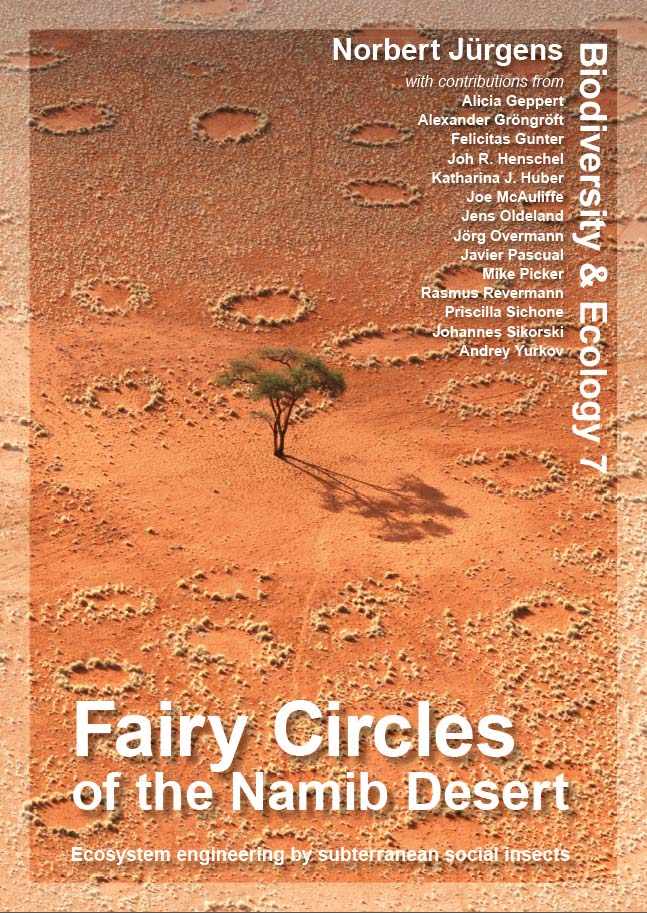
|

Department of Biology Institute of Plant Science and Microbiology |
| Division BEE > Biodiversity & Ecology > Vol.7 > Article 5 |
Biodiversity & Ecology
Journal of the Division Biodiversity, Evolution and Ecology of Plants , Institute for Plant Science and Microbiology, University of Hamburg.
5 Life history Book chapter 5 The life history of Namib Fairy Circles Abstract: Chapter 5 looks at the changes observed in Namib Fairy Circles and the sand termite colonies, during the time of their existence (ontogeny). Evidence of change is obtained using long-term photographic observation series at diff erent temporal and spatial scales, including time lapse photography of up to 6 years. Following our hypothesis, the formation of a new fairy circle is caused by the foundation of a new colony of sand termites of the genus Psammotermes. The duration of the sand termites’ lifespan is debated and may vary depending on the sand termite species. This chapter also looks at the phenology of fairy circles (i.e., the annually repeated changes). These are mostly of episodic character, triggered by the fi rst strong precipitation event and followed by the rapid germination of plants and subsequent complex states driven by herbivory, carnivory and omnivory. Finally, the disappearance of fairy circles is discussed.
Suggested citation: |
